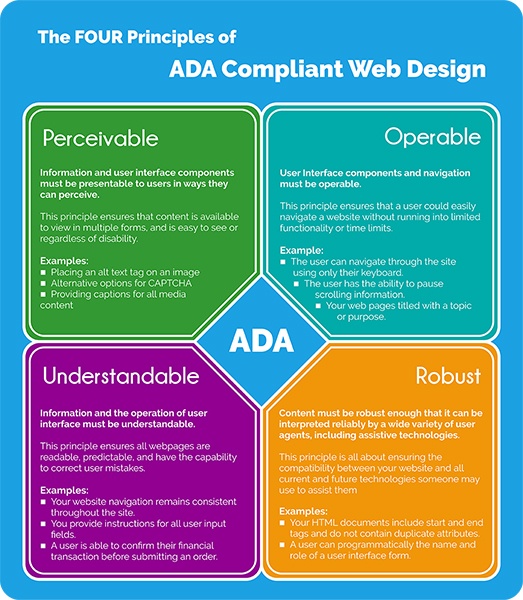
Website Accessibility and Modern ADA Requirements
Creating websites that are truly accessible to all users requires a certain degree of experience. Website accessibility is an important issue in the modern world. All people need to be able to use the Internet. While many people will care about issues related to website accessibility and ADA compliance, they still might not know very much about website ADA principles personally. Working with the developers who specialize in creating more accessible websites can immensely help to address the issue. Our websites are developed according to modern ADA requirements.
The Challenges That People With Disabilities May Face Online
Most of the information online is presented visually. As such, people who have vision impairments will often struggle when they perform tasks online. Some websites will be difficult for people with moderate vision impairments to use, because the websites will use a small font. Websites that are color-coded in any way will be difficult for people to use if they have issues with color blindness.
It’s important to remember that people who have severe vision problems will use keyboard shortcuts when they visit websites. They will not use the mouse, since this would mean that they would have to follow the cursor on the screen at the same time. Visually impaired people will rely on their sense of touch when using the keyboard, and they will also make use of screen reader technology while using the Internet in general. For them, website accessibility means being able to use all of these different tools and more.
More and more websites are now using auditory data rather than visual data, which is valuable for visually impaired people. However, it’s making things more difficult for people who suffer from hearing impairments. Some of these people will need access to volume controls that have a different sound range. People who have partial hearing might be able to benefit from those accommodations. Other people will need to have written transcripts of videos that they can access, as well as other visual accommodations.


